user 304091
Member
- Joined
- Sep 30, 2022
- Messages
- 6
- Reaction score
- 0
Hello!
I recently posted in introductions but see this might be a more appropriate forum for this. Sorry for cross posting.
My wife and I have embarked on a journey to make elderberry wine. It has been going OK but it looks like we have come to an abrupt end unless anyone can suggest otherwise.
The wine has been sat in a carboy for a few months now. Life has got in the way. We were about to attempt a bottling and found that it has been infected with something. Looks like mold, particularly what looks like something filamentous near the neck of the carboy... but what do you think? Some 'interesting' happenings in the sediment layer too. Sorry about the shocking photos! We treated with campden etc. last time we racked and have kept an eye on the stopper to make sure it was filled. As it was treated, assumedly the source must be the airlock - is that correct? We do think we kept this topped up, but perhaps there's a way in somewhere?
Any suggestions/advice would be amazing. Even if it is to just chuck it. It's a shame (it was tasting amazing last time we checked on it) but we would pour it away knowing we'd sought advice. We haven't tried it this time btw. We thought we would seek advice first. Also curious to know what we could do to prevent this from happening again. Is this likely to happen if a wine is left still for an extended time? Even if treated? Perhaps the treatment wasn't enough for our wine (even though instructions were followed) or perhaps something is wrong with our setup? Should we have racked more regularly and treated each time afresh? Might just need a different airlock! If this was in a bottle we might not have seen it.
I recently posted in introductions but see this might be a more appropriate forum for this. Sorry for cross posting.
My wife and I have embarked on a journey to make elderberry wine. It has been going OK but it looks like we have come to an abrupt end unless anyone can suggest otherwise.
The wine has been sat in a carboy for a few months now. Life has got in the way. We were about to attempt a bottling and found that it has been infected with something. Looks like mold, particularly what looks like something filamentous near the neck of the carboy... but what do you think? Some 'interesting' happenings in the sediment layer too. Sorry about the shocking photos! We treated with campden etc. last time we racked and have kept an eye on the stopper to make sure it was filled. As it was treated, assumedly the source must be the airlock - is that correct? We do think we kept this topped up, but perhaps there's a way in somewhere?
Any suggestions/advice would be amazing. Even if it is to just chuck it. It's a shame (it was tasting amazing last time we checked on it) but we would pour it away knowing we'd sought advice. We haven't tried it this time btw. We thought we would seek advice first. Also curious to know what we could do to prevent this from happening again. Is this likely to happen if a wine is left still for an extended time? Even if treated? Perhaps the treatment wasn't enough for our wine (even though instructions were followed) or perhaps something is wrong with our setup? Should we have racked more regularly and treated each time afresh? Might just need a different airlock! If this was in a bottle we might not have seen it.
Attachments
-
 1e98f52f-c15f-4540-a7f2-b11e73b065e5.jpg393.1 KB · Views: 0
1e98f52f-c15f-4540-a7f2-b11e73b065e5.jpg393.1 KB · Views: 0 -
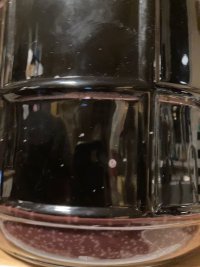 8fc8faab-82ec-4ef4-b9eb-ef0e1296853f.jpg409 KB · Views: 0
8fc8faab-82ec-4ef4-b9eb-ef0e1296853f.jpg409 KB · Views: 0 -
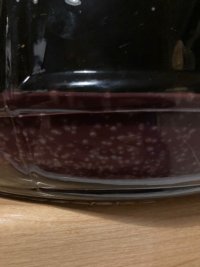 596df216-5a67-4e8b-9dc7-ef16f57015c7.jpg281.3 KB · Views: 0
596df216-5a67-4e8b-9dc7-ef16f57015c7.jpg281.3 KB · Views: 0 -
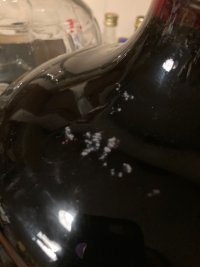 b6b4adb6-17ab-4ce4-be88-450785b4a046.jpg269.2 KB · Views: 0
b6b4adb6-17ab-4ce4-be88-450785b4a046.jpg269.2 KB · Views: 0 -
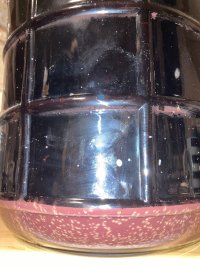 bafb0b7d-0555-4b1b-bad4-16acf8969055.jpg553.5 KB · Views: 0
bafb0b7d-0555-4b1b-bad4-16acf8969055.jpg553.5 KB · Views: 0 -
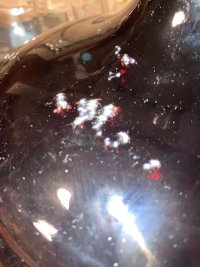 d694d446-c6c4-4f10-9ef7-dba7145cae31.jpg432 KB · Views: 0
d694d446-c6c4-4f10-9ef7-dba7145cae31.jpg432 KB · Views: 0



